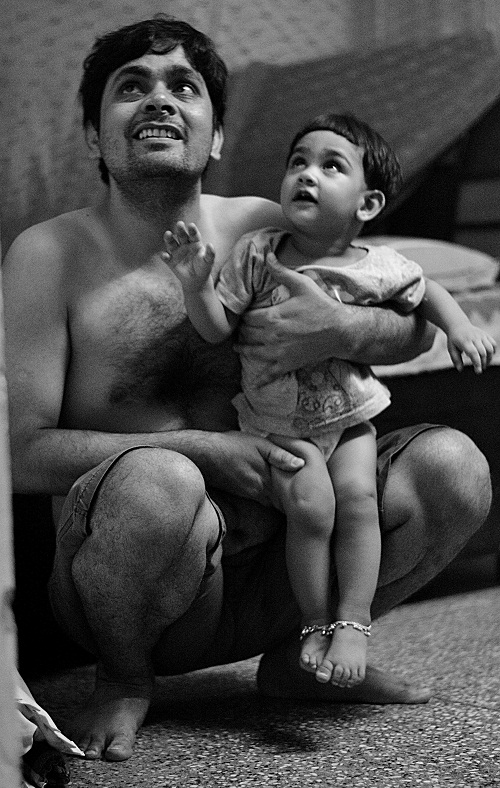Sometimes, you just can't get this shot. That might be the case, here. You don't have the right lens, or the right positioning, and what you want to make happen, can't. In your case, 50mm lens and a small room — not much to be done.
I have three ideas, though
First, and risky, you could move so that you're actually in the line of sight between the subjects and the lizard. Then, you have a "lizard's point of view" image. I don't know, though, if the cherubic expression you captured would be the same. And I say risky because blocking the interesting view is likely to get upset subjects, especially when they're too young to be explained to and pose intentionally.
Second, you could talk to the older subject and perhaps have him look at the child. Possibly this would even align so that it seems like the child is looking adorably at the father and not a lizard at all. Or, if not, at least there would be some visual weight directed into the frame. Could work — but, is really a different photograph — in other words, just another way of saying you couldn't get the shot you imagined.
So, third, I'm thinking outside of the box. Literally! Take a second picture of the lizard in its place, and then print the two as a pair — a diptych — displayed with the photo of the lizard just above and to the left. Like this:

Hmmm. Well, maybe not at that scale. I just took a random Creative Commons image. But that's the idea — you couldn't get it all in a single frame, but the overall composition doesn't need to be limited to a single frame. Looking at this mockup, the lizard is clearly too large — might work better if it were smaller with the frame (as taken with your 50mm lens without moving, for example), or maybe even with a smaller frame.
Of course, you don't have to put the actual lizard there. You could put the mother smiling down benevolently, or just another photograph you'd like to draw attention to. (In that case, that frame could be even larger, with these two serving sort of like Raphael's cherubs.





